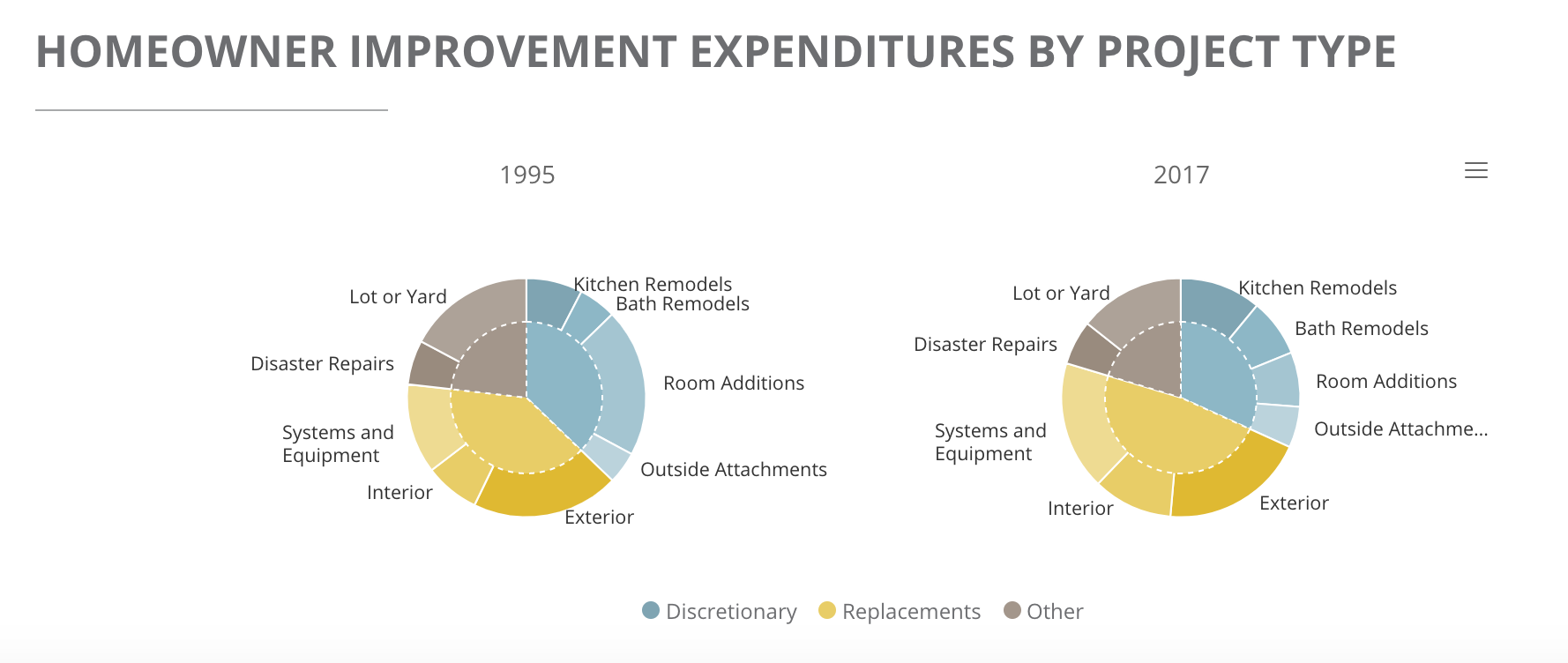Every homeowner wants to know which home improvement projects give the best return on investment, so it’s no surprise that those types of projects — simple things like replacing the carpet or restaining the floors — are among the most popular improvements homeowners are making.
A recent Harvard Joint Center for Housing Studies report found that in 2017, 5.2 million homeowners made interior upgrades to carpets, floors, paneling or ceiling tiles, making that the most popular home improvement category. On average, they spent $3,283 for these updates.
In general, homeowners are spending more on remodeling projects than they have since the recession. Home improvement spending in 2017 reached nearly $425 billion, or 50 percent more than it was in the post-recession aftermath in 2010.
The most common system to be upgraded was the plumbing, with 4.1 million homeowners spending an average of $1,360; it was the second most popular remodeling project overall.
Adding built-in dishwashers and garbage disposals, changing windows and doors, and installing water heaters come after. Nearly 3.7 million homeowners spent money on each of these projects.
The bottom half of the top 10 includes exterior projects and additional systems. Roofing, bathrooms, and landscaping and sprinkler systems were part of renovations for 3.4 million, 2.9 million and 2.8 million homeowners, respectively, while 2.7 million and 2.2 million also worked on central air-conditioning and electrical wiring and fusing.
 Episode 4 – The Millionaire Real Estate Agent
No company is immune to competition. How do you stay relevant and deliver value above and beyond the norm to keep and attract your customers or consumers? READ MORE
Episode 4 – The Millionaire Real Estate Agent
No company is immune to competition. How do you stay relevant and deliver value above and beyond the norm to keep and attract your customers or consumers? READ MORE

Harvard University Joint Center for Housing Studies
“With new construction slowly recovering from historic lows, 40 percent of the country’s 137 million homes are at least 50 years old,” said Abbe Will, the associate project director of the Remodeling Futures Program, in a press statement. “The aging of the housing stock has been a boon to the remodeling industry, with spending surpassing investment in homebuilding every year for over a decade, and contributing 2.2 percent to US economic activity in 2017.”
Renewed interest in investment could, according to the report, be caused by slowing construction. With 40 percent of the 137 million homes in the country at least 50 years old, remodeling projects are more likely to bring in investment returns. In general, homeowners are choosing to put their money toward replacement projects. Exterior and interior replacements as well as systems and equipment upgrades are up nearly 10 percent since the recession.
Remodeling projects are also much more popular among older homeowners. More than half of all who undertook one in 2017 were over 55 years old. That said, younger homeowners are increasingly undertaking home improvement projects. The number of those who started one under age 35 rose 6 percent to 7.3 million between 2015 and 2017. The group in general is spending $22 billion, or 20 percent more, than it was before.
With an older spending base, there is also a larger number of people paying for the projects with savings rather than credit. More than half of all remodeling projects costing more than $50,000 were paid for in cash. This greater spending ability, as well as the equity generated by increasing home values, could, according to the study’s authors, signify a boon for the home improvement industry in the years to come.
“Over the next decade, the strong preference of older homeowners to age in place and the increasing difficulty of building affordable housing in many markets will continue to hinder the construction of new homes,” said Kermit Baker, the director of the Remodeling Futures Program. “The remodeling industry will therefore retain its critical role in helping the country meet its housing needs.”
Source: click here














